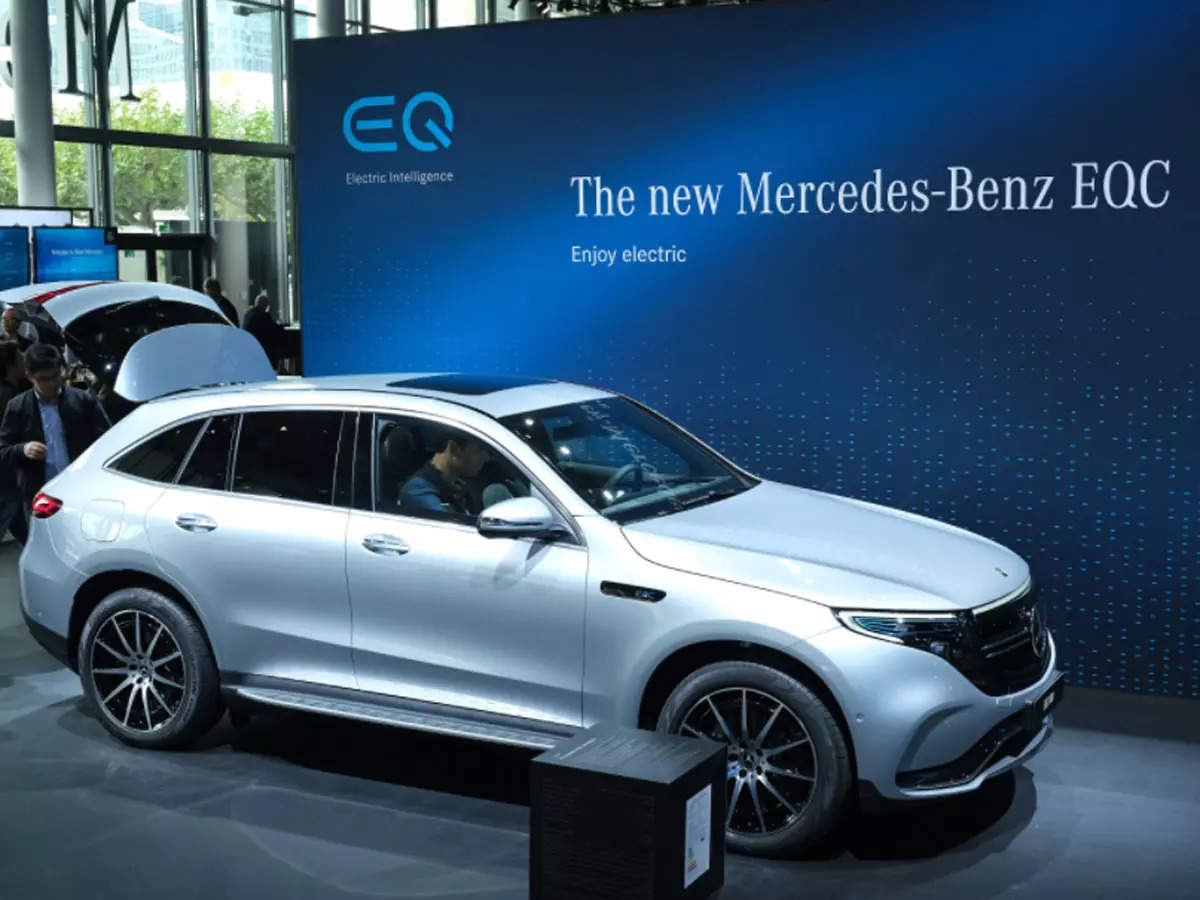
Luxury car market leader Mercedes Benz has said while it wants the government to give some rebate on import duties for fully built cars including EVs, the possibility of assembling its electric cars in India is real given how well it has been received in the market.
The company launched its first EV–EQC, last year at Rs 1 crore–later increased to Rs 1.1 crore, and recently opened bookings for the second lot after the first lot was exhausted ahead of expectations. Import of cars as CBU (completely built unit) attract a tax of 60 percent while those that cost over $ 40,000 (Rs 29 lakh) are taxed at 100 percent. In contrast, for cars that are assembled in the country as CKD (completely knocked down), the effective import duty falls to between 15 and 30 percent. For electric vehicles the duty on CKD assembly is on the lower band of 15 percent while if it is assembled in SKD form (semi knocked down) it is 25 percent.
“Local assembly of our global products is supported by lower duty rates, for which we have also started assembling our high performance AMG cars since last year. Going forward, if the market demand for EVs grow the way it is projected currently, and with more product introductions, local assembly of the EVs can be a real possibility,” Martin Schwenk, MD & CEO Mercedes Benz India told ETAuto.
“For higher localization of components and parts, we need substantial volumes in excess of at least 30,000 units each year for just one model, to amortize the high tooling cost. Currently our best sales had been 15500 units annually, across 20 models. Therefore, it is not feasible with current low volumes,” he added.
While the domestic luxury car market has stagnated at less than 50,000 units over the last 5 years, Mercedes has added more cars for assembly in the country to make their products more affordable. It has proved to be a potent strategy at outflanking rivals.
For higher localization of components and parts, we need substantial volumes in excess of at least 30,000 units each year for just one model, to amortize the high tooling cost.Martin Schwenk, MD & CEO Mercedes Benz India
Today, the Stuttgart based firm assembles 13 cars in India against just 7 in 2015. Last year, it started assembling even some of its high performance AMG cars in India, which has helped lower the price point and contributed to a robust increase in sales.
The company for example, began assembling the GLC43 AMG brand in the country last year and priced it at Rs 76.7 lakh against the earlier price tag of nearly Rs 1 crore for the previous generation version which was being fully imported into the country.
As a result, Mercedes witnessed a 200 percent jump in sales of its AMG portfolio in the first six months of this calendar year. The imported EQC is also currently priced at Rs 1.1 crore and could see a similar reduction, when the company decides to assemble them here.
“We have a very capable and strong product lineup. We have already either launched or announced a line up that comprises almost the entire alphabets–EQA, EQB, we already have the EQC, then EQE and EQS,” Schwenk said. “And then next year, we will also look at the SUVs of EQE and EQS. Based on the requirements of the local market and the competitive scenario we will decide which products to bring here.”
To help companies scale up and aid them in their investments in future mobility technologies, the government recently came out with the details of its ambitious production linked incentive scheme with an outlay of Rs 26,058 crore spread over 5 years.
In addition to that, the Rs 10000 crore FAME II scheme which provides direct incentives to customers for buying electric vehicles–though luxury EVs do not qualify for that, and a Rs 18,100 crore PLI scheme for advanced chemistry cell batteries have also been announced. Are these incentives enough for companies to commit to investments for EVs and hydrogen for the future?
“We need to do a little bit more assessment on this though I think the intentions are good. The direction is clear and fine,” he added. “For existing companies like us who can technically participate in this, it requires a substantial amount of investment. Our condition as a company right now is we have already invested a lot and cannot fully utilise it because we just don’t have the volumes which we had hoped for years ago. So in that sense it’s a bit difficult to add additional investment and then gain the benefit from the scheme. But we need to do further assessment.”















